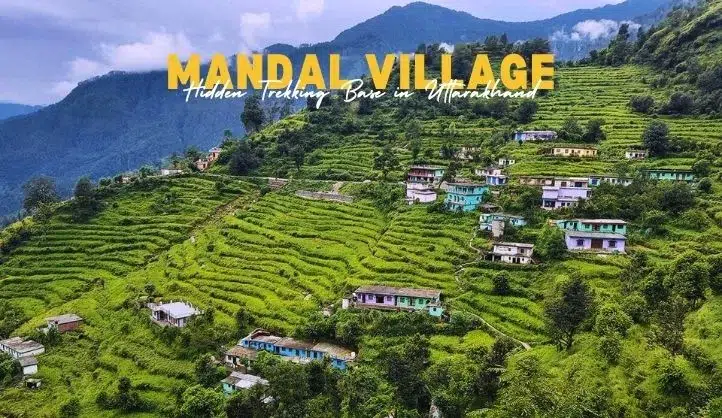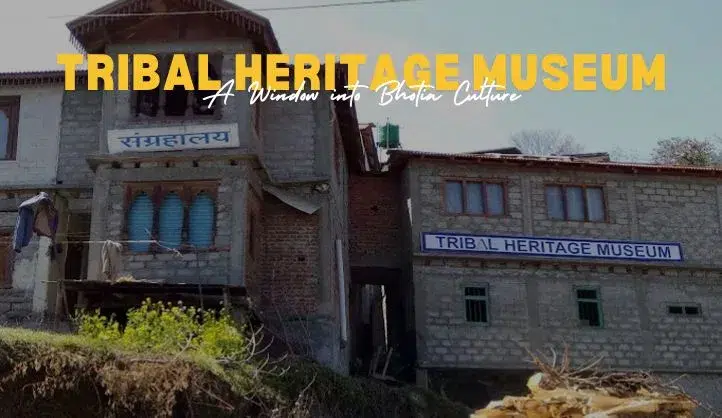“Unveil Binsar’s Charm: Your Ultimate Binsar Travel Guide! 🌄 Explore stunning viewpoints, wildlife encounters, and more. Let’s wander! 🗺️🦌 #BinsarTravelGuide”
About of Binsar
Nestled in the breathtaking landscapes of Uttarakhand, Binsar stands as a serene hill station that captivates with its pristine beauty and tranquil surroundings. This destination offers a perfect blend of panoramic views, lush greenery, and a rich cultural heritage.
Key Points:
- Scenic Grandeur: Binsar is renowned for its awe-inspiring vistas, including the mesmerizing view of the Nanda Devi, Trishul, and Panchachuli peaks from the Zero Point.
- Biodiversity Hotspot: The Binsar Wildlife Sanctuary adds to the charm, housing diverse flora and fauna, making it a paradise for nature enthusiasts and wildlife photographers.
- Historical Legacy: The area holds historical significance, being the ancient capital of the Chand Kings. This heritage is reflected in the Binsar Mahadev Temple and the Archaeological Survey of India museum.
- Peaceful Retreat: With limited commercialization and a tranquil atmosphere, Binsar offers a serene escape from the hustle and bustle of city life.
History of Binsar
The history of Binsar is deeply rooted in the annals of time, reflecting the region’s cultural and historical significance. Here’s a glimpse into the past that shaped the present-day charm of Binsar:
Key Points:
- Chand Dynasty: Binsar was the ancient summer capital of the Chand Kings, who ruled the Kumaon region in the medieval period.
- Cultural Heritage: The area’s history is deeply rooted in the Kumaoni culture, and remnants of its past can be seen in the various temples and heritage sites.
- Spiritual Significance: The Binsar Mahadev Temple, dedicated to Lord Shiva, is a historic temple that attracts devotees and tourists alike.
- British Era: During the British colonial period, Binsar served as a cantonment for the British Army due to its strategic location and pleasant climate.
- Conservation Efforts: The establishment of the Binsar Wildlife Sanctuary in 1988 aimed to protect the rich biodiversity and ensure the preservation of the region’s natural heritage.
Why Binsar is Famous:
Binsar has garnered fame for its remarkable attributes that leave a lasting impression on all who visit. Here’s why Binsar stands out as a renowned destination:
Spectacular Himalayan Views: Binsar is famed for its breathtaking vistas of the Himalayan range, offering panoramic sights of iconic peaks like Nanda Devi, Trishul, and Panchachuli.
Binsar Wildlife Sanctuary: The sanctuary is a haven of biodiversity, housing diverse flora and fauna. Wildlife enthusiasts are drawn to its richness, making it a hotspot for eco-tourism.
Historical Significance: Binsar holds historical importance as the ancient capital of the Chand Kings. This heritage is visible in the Binsar Mahadev Temple and the region’s archaeological sites.
Tranquil Environment: Its serene ambiance makes Binsar a popular retreat for those seeking solace and an escape from the urban hustle, providing a serene contrast to city life.
Natural Splendor: The combination of lush greenery, oak and rhododendron forests, and pristine landscapes contributes to Binsar’s fame as a natural paradise.
Outdoor Activities: Binsar offers a plethora of activities, including nature walks, wildlife spotting, and exploration of ancient temples, catering to a wide range of interests.
Things to Do in Binsar
- Zero Point: Head to Zero Point for a spellbinding view of snow-capped peaks. Sunrise and sunset views from here are particularly enchanting.
- Binsar Wildlife Sanctuary: Explore the sanctuary’s trails for birdwatching and spotting Himalayan wildlife like leopards, langurs, and barking deer.
- Binsar Mahadev Temple: Delve into history at the Binsar Mahadev Temple, a sacred site with intricate architecture, located amidst lush forests.
- Nature Walks: Binsar offers numerous walking trails amidst oak and rhododendron forests. These walks provide an opportunity to immerse in nature’s beauty.
- Photography: Capture the mesmerizing landscapes, vibrant flora, and unique fauna. Binsar’s natural beauty makes it a photographer’s paradise.
- Pariyadeva Pashan: Discover ancient rock inscriptions at Pariyadeva Pashan, shedding light on the area’s historical significance.
- Local Markets: Explore local markets for traditional handicrafts and souvenirs, allowing you to take home a piece of Binsar’s culture.
- Relaxation: Binsar’s tranquility provides the perfect backdrop for yoga, meditation, or simply unwinding amidst nature.
Things to Know about Binsar:
Before embarking on your journey to Binsar, it’s beneficial to equip yourself with essential insights that will enhance your experience and ensure a smooth and enjoyable visit. Here are key things to know about Binsar:
1. Pristine Natural Beauty:
- Binsar is celebrated for its unspoiled landscapes, offering panoramic views of the Himalayan peaks. The Zero Point viewpoint presents an opportunity to witness the grandeur of Nanda Devi, Trishul, and Panchachuli peaks.
2. Binsar Wildlife Sanctuary:
- The Binsar Wildlife Sanctuary is a haven for nature enthusiasts and wildlife lovers. It boasts a diverse range of flora and fauna, including leopards, Himalayan black bears, langurs, and various bird species.
3. Historical Significance:
- Binsar holds a rich historical legacy as the ancient capital of the Chand Kings during the medieval era. This heritage is reflected in the intricately carved Binsar Mahadev Temple and the region’s archaeological sites.
4. Tranquil Retreat:
- Binsar offers a serene ambiance, making it an ideal escape from the chaos of urban life. The absence of commercialization adds to its tranquility, allowing travelers to connect with nature on a deeper level.
5. Eclectic Activities:
- The destination caters to diverse interests. From nature walks in oak and rhododendron forests to exploring ancient temples and engaging in wildlife spotting, Binsar offers a range of activities.
6. Responsible Tourism:
- Binsar emphasizes responsible tourism. Adhering to eco-friendly practices and respecting local culture are vital to preserving the natural beauty and cultural heritage of the region.
7. Weather Variability:
- The weather in Binsar can vary significantly based on the season. It’s advisable to be prepared for fluctuating temperatures and to pack accordingly.
In essence, understanding these key aspects about Binsar prepares you for an enriching exploration of its natural wonders, historical significance, and diverse experiences. Whether you’re drawn to panoramic vistas, wildlife encounters, or spiritual insights, Binsar offers a multifaceted journey that caters to a variety of interests.
How to Reach Binsar
- By Air:
- Nearest Airport: Pantnagar Airport (150 km away).
- From the airport, hire a taxi or take a bus to reach Binsar.
- By Train:
- The nearest railhead is Kathgodam Railway Station (120 km away).
- From Kathgodam, taxis and buses are available to Binsar.
- By Road:
- Binsar is well-connected by road to major cities in Uttarakhand.
- Regular buses and private taxis operate from cities like Delhi, Nainital, and Almora.
- Route Options:
- The most common route is from Almora, which is about 33 km away from Binsar.
- Almora serves as a base, and further transportation options are available to reach Binsar.
- Local Transport:
- After reaching Almora, local taxis or shared jeeps can be hired to reach Binsar.
- Trekking Routes:
- For adventure enthusiasts, trekking routes from nearby villages to Binsar are accessible, offering a unique way to experience the area.
Travel Tips for Binsar:
- Weather Awareness: Pack layers of clothing to adapt to changing temperatures. Nights can get chilly even during warmer months.
- Comfortable Footwear: Sturdy walking shoes are essential for exploring trails and uneven terrain in Binsar.
- Medications and First Aid: Carry basic medications and a first aid kit for any unforeseen health issues.
- Cash Availability: Ensure you have enough cash as ATMs might be limited or unavailable in remote areas.
- Respect Local Culture: Binsar has cultural sites. Dress modestly and be respectful when visiting temples and local communities.
- Eco-friendly Practices: Follow responsible trekking and eco-friendly practices to preserve the pristine environment.
Best Time to Visit Binsar
The timing of your visit to Binsar plays a crucial role in enhancing your experience of this captivating destination. Binsar’s weather and landscapes vary throughout the year, offering distinct advantages during different seasons.
Summer (April to June):
- Weather: During these months, Binsar experiences pleasant weather with temperatures ranging from 15°C to 25°C.
- Advantages: This is an ideal time for outdoor activities such as nature walks and wildlife spotting. The clear skies provide unobstructed views of the majestic Himalayan peaks, making it a paradise for photographers and nature enthusiasts.
Monsoon (July to September):
- Weather: Monsoon brings moderate to heavy rainfall to Binsar, with temperatures ranging from 12°C to 18°C.
- Advantages: While landslides are a possibility, the lush greenery that envelops the region creates a magical ambiance. The fresh foliage and misty landscapes offer a unique perspective for travelers seeking a serene escape.
Autumn (October to November):
- Weather: The post-monsoon period witnesses cooler temperatures ranging from 5°C to 15°C.
- Advantages: This season showcases the vibrant transition of foliage, with lush greens turning to golden hues. The crisp air enhances visibility, making it an excellent time for trekking, nature walks, and birdwatching.
Winter (December to February):
- Weather: Binsar experiences cold temperatures during winter, ranging from 0°C to 10°C.
- Advantages: The region transforms into a winter wonderland with occasional snowfall, making it an enchanting destination for those who enjoy the cold. The snow-capped landscapes and cozy ambiance create a unique and picturesque setting.
In essence, the best time to visit Binsar varies based on your preferences and the experiences you seek. Whether you’re captivated by panoramic views, fascinated by wildlife, or intrigued by the charm of different seasons, Binsar offers a window into its beauty throughout the year.
Places to Eat Near Binsar:
- 1. Almora:
- A vibrant town with an array of restaurants and local eateries, offering a mix of Kumaoni cuisine and North Indian dishes.
2. Dhaulchhina:
- This nearby village boasts small eateries serving traditional meals and snacks, providing a taste of local flavors.
3. Binsar Retreat:
- Within Binsar itself, the Binsar Retreat offers a restaurant serving a variety of Indian and continental dishes.
4. Jageshwar:
- Renowned for its ancient temples, Jageshwar has modest eateries that provide simple and authentic local delicacies.
5. Kasar Devi:
- This area features cafes and restaurants offering stunning views alongside vegetarian and international cuisine.
6. Bageshwar:
- Another nearby town, Bageshwar, hosts eateries showcasing Kumaoni specialties and traditional Indian fare.
Savor Culinary Delights Near Binsar: With a variety of dining options ranging from local flavors to international cuisine, the area surrounding Binsar offers a diverse culinary experience. Whether you’re in the mood for traditional Kumaoni dishes or want to indulge in continental flavors, these dining destinations ensure that your taste buds are in for a treat during your visit.
Nearby Places to Binsar
Venturing beyond Binsar unveils a tapestry of diverse destinations that offer their own unique charms. Here are some nearby places to consider exploring:
1. Almora:
- Known for its captivating views and bustling markets, Almora is a prominent nearby town. Explore its historical sites, including the Nanda Devi Temple, and enjoy local cuisine.
2. Jageshwar:
- Revered for its cluster of ancient temples, Jageshwar is a spiritual haven. The Jageshwar Temple complex houses intricately carved shrines, transporting visitors to a bygone era.
3. Kasar Devi:
- A serene village with an artistic vibe, Kasar Devi offers stunning views of the Himalayas. The Crank’s Ridge is a favorite among trekkers, and the area has been a retreat for spiritual seekers.
4. Bageshwar:
- Nestled on the confluence of rivers Gomti and Saryu, Bageshwar is known for its religious significance. It houses the revered Bagnath Temple and provides a serene riverside experience.
5. Mukteshwar:
- Renowned for the Mukteshwar Temple and Chauli ki Jali, an interesting rock formation, Mukteshwar offers panoramic vistas and adventure activities like rappelling and rock climbing.
6. Kausani:
- Often referred to as the “Switzerland of India,” Kausani offers sweeping views of the Himalayas. It’s an ideal spot to witness stunning sunrises and sunsets.
7. Ranikhet:
- A charming hill station with a military heritage, Ranikhet is known for its lush golf course, temples, and the historic Chaubatia Gardens.
Each of these nearby destinations complements the allure of Binsar, adding layers to your Uttarakhand experience. From spirituality and history to panoramic vistas and serene retreats, these places offer a diverse range of experiences that cater to every traveler’s interests.
Conclusion:
In conclusion, Binsar in Uttarakhand beckons with its pristine landscapes, rich biodiversity, and historical significance. From the mesmerizing Himalayan views to the tranquil ambiance of its wildlife sanctuary, Binsar offers a unique blend of natural beauty and cultural heritage. Whether you’re an adventure enthusiast, a nature lover, or a seeker of historical insights, Binsar has something to offer for everyone. By following travel tips, understanding the best time to visit, and exploring dining options, you can create a memorable journey filled with enriching experiences.
Frequently Asked Questions (FAQ) About Binsar Travel Guide:
Q1: What makes Binsar special?
- A1: Binsar stands out for its breathtaking Himalayan views, rich biodiversity, and cultural sites like the Binsar Mahadev Temple.
Q2: What’s unique about Binsar’s wildlife sanctuary?
- A2: The Binsar Wildlife Sanctuary boasts diverse flora and fauna, offering a captivating experience for wildlife enthusiasts.
Q3: How can I reach Binsar?
- A3: Binsar is accessible by air through the Pantnagar Airport, by train via Kathgodam Railway Station, and by road from nearby cities.
Q4: What’s the best time to visit Binsar?
- A4: The best time is during summer (April to June) for pleasant weather and clear skies, or autumn (October to November) for cool temperatures and lush landscapes.
Q5: What should I keep in mind while exploring Binsar?
- A5: Respect local culture, carry essentials like comfortable footwear, and follow eco-friendly practices to preserve the natural beauty of Binsar.









